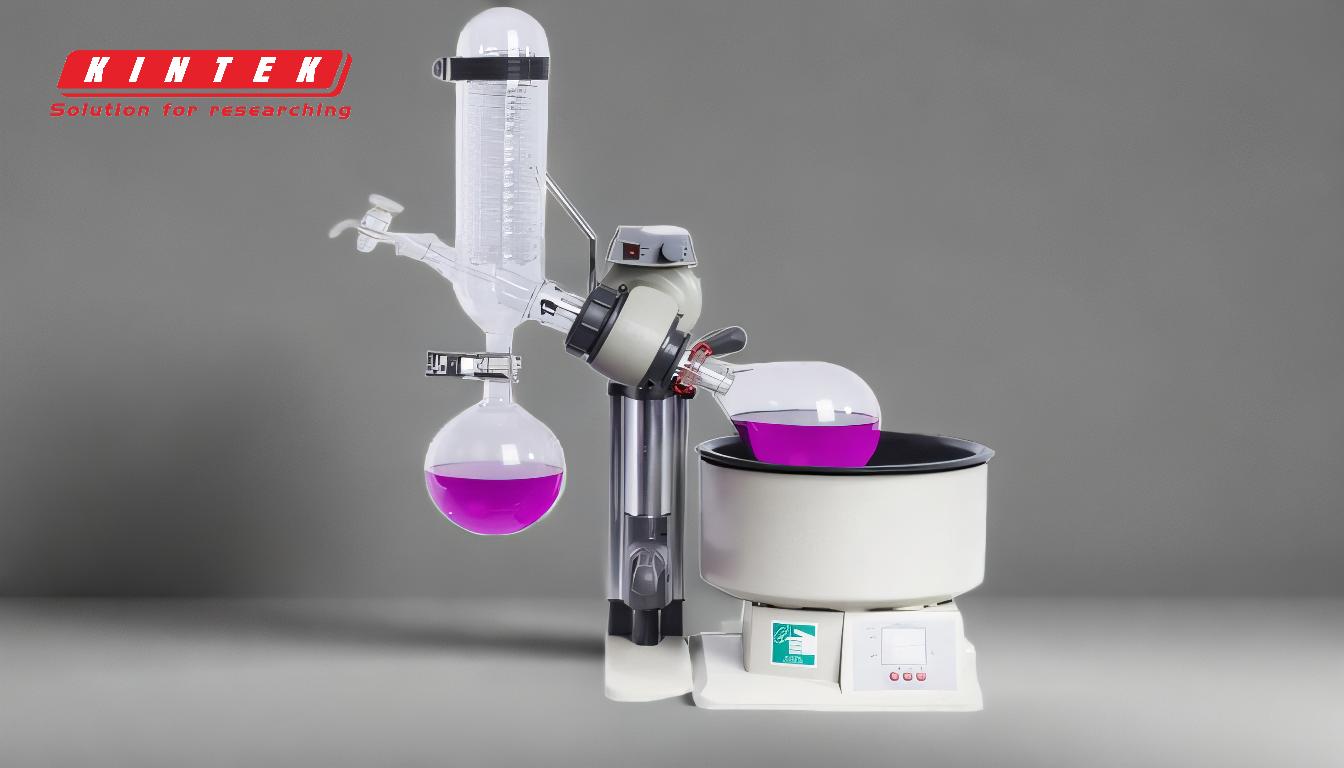Rotary evaporation is a highly efficient technique for speeding up solvent evaporation, primarily due to its ability to combine several key features that enhance the process. By reducing pressure, increasing surface area through rotation, applying controlled heat, and condensing the evaporated solvent, rotary evaporators significantly reduce distillation times. For example, they can reduce the time required to eliminate ether from hours to just 20 minutes. These features work synergistically to maximize evaporation rates, making rotary evaporation a preferred method in laboratories for solvent removal.
Key Points Explained:

-
Reduced Pressure (Vacuum System):
- How it works: The vacuum pump lowers the pressure inside the system, which in turn reduces the boiling point of the solvent. This allows the solvent to evaporate at lower temperatures, minimizing the risk of thermal degradation of heat-sensitive compounds.
- Impact on evaporation: Lowering the boiling point accelerates the evaporation process, as less energy is required to transition the solvent from liquid to vapor.
-
Increased Surface Area (Rotation of the Flask):
- How it works: The flask containing the solvent is rotated, causing the liquid to form a thin film on the inner walls of the flask. This significantly increases the surface area exposed to the reduced pressure and heat.
- Impact on evaporation: A larger surface area allows for more efficient and rapid evaporation, as more solvent molecules are exposed to the conditions necessary for phase transition.
-
Controlled Heating (Water Bath):
- How it works: The water bath provides gentle and uniform heating to the flask, ensuring that the solvent is heated evenly without localized overheating.
- Impact on evaporation: Controlled heating supplies the necessary energy for evaporation while preventing excessive heat that could damage sensitive compounds.
-
Efficient Condensation (Cooled Glass Condenser):
- How it works: The evaporated solvent vapor is rapidly cooled and condensed in a high-efficiency condenser, often using a cold finger with dry ice or a chilled coolant.
- Impact on evaporation: Efficient condensation ensures that the solvent vapor is quickly removed from the system, maintaining the reduced pressure and preventing re-condensation, which would slow down the process.
-
Synergistic Effect of Combined Features:
- How it works: The combination of reduced pressure, increased surface area, controlled heating, and efficient condensation creates an optimized environment for rapid solvent evaporation.
- Impact on evaporation: This synergy allows rotary evaporators to achieve evaporation rates that are significantly faster than traditional distillation methods, making them ideal for laboratory applications.
-
Practical Example:
- Efficiency in action: For instance, a rotary evaporator can reduce the time required to remove ether from a solution from several hours to approximately 20 minutes. This dramatic reduction in time is a direct result of the optimized conditions provided by the rotary evaporator.
By understanding these key features and their roles in the evaporation process, users can better appreciate the efficiency and effectiveness of rotary evaporation for solvent removal in laboratory settings.
Summary Table:
| Feature | How It Works | Impact on Evaporation |
|---|---|---|
| Reduced Pressure | Lowers boiling point of solvent, enabling evaporation at lower temperatures. | Accelerates evaporation by reducing energy needed for phase transition. |
| Increased Surface Area | Rotation creates a thin film, exposing more solvent to heat and reduced pressure. | Enhances evaporation rates by maximizing solvent exposure. |
| Controlled Heating | Uniform heating from a water bath prevents overheating. | Provides consistent energy for evaporation without damaging sensitive compounds. |
| Efficient Condensation | Rapid cooling and condensation of solvent vapor. | Maintains reduced pressure and prevents re-condensation, ensuring faster evaporation. |
| Synergistic Effect | Combines all features for optimized evaporation. | Achieves significantly faster evaporation rates compared to traditional methods. |
| Practical Example | Reduces ether removal time from hours to 20 minutes. | Demonstrates the efficiency of rotary evaporation in real-world applications. |
Ready to enhance your lab's efficiency with rotary evaporation? Contact our experts today to learn more!










